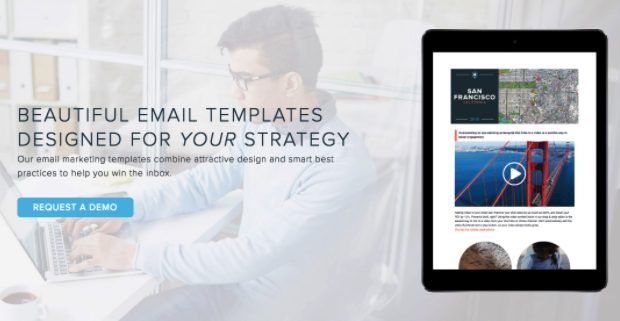Time to Rethink Your Conversion Rate Optimization! [part 1]

5 Great Tips for Conversion Rate Optimization
Conversion Rate Optimization (or CRO) is the process of increasing user engagement to lead to conversion or any other desired action such as subscribing to an email list. The following are 5 not-so-obvious ways to breathe new life into your CRO strategy. Whether you are a novice or seasoned CRO, you will become more familiar with a variety of ways you can squeeze a few more percentage points out of your conversion rate.
1. Incorporate Micro-Commitments
Micro-commitments are small yet impactful actions to help get your target audience into the habit of saying “yes.” From sharing on social media to signing up for a newsletter, each micro-commitment can lead to the path of your overarching action.
The Shopify blog is a great example of this. Their target audience is sellers who can utilize the platform to compete with other e-commerce businesses. At the top of their blog, they position their newsletter as a valuable way to get “free business lessons.” This offer is helpful to businesses looking to become successful in e-commerce with minimal effort.

2. Stay Consistent and Meet Expectations
One of the biggest causes of website abandonment is brand inconsistency. A Halloween-themed ad featuring your brand mascot in a pumpkin costume loses a lot of its spunk when the user clicks through to your ultra-professional, non-themed home page. Meeting user expectation is incredibly important in order to foster client trust and encourage a conversion action.
Review your landing page and make sure it matches what you display in your title tag and meta description. You may even want to take a look at which of your PPC ads perform best and test the meta content. With ads, kick things up a notch with dynamic text replacement based on the user persona and keywords you’re targeting. Swap out H1 tags and other text fields on the landing page to match the ad copy. If you use display or video advertising, stay consistent with the feel, color scheme, and vibe of both the ad and landing page.
Hotels.com uses a plug-and-play ad for Newport Beach hotels. When the user clicks through to the landing page, it reinforces Newport Beach hotels in the breadcrumbs, H1 tag, and a search box with a picturesque view of the Newport Pier. With the help of the “show deals” CTA, the customer is reminded that the picturesque view is only a click away.


3. Get Personal
Emails with the recipient’s name in the subject line get a significantly higher open rate than ones without. Take this a step further by including your customer’s name in the email copy and even the landing page. (Just keep in mind that with personalization, too much may seem overly eager or creepy.).
Sephora sends out a “Happy Birthday” email to their customers which also includes a free birthday gift. The recipient sees their name multiple times throughout the email along with numerous recognitions of their VIP “Beauty Insider” status making the email feel personalized and special.

4. Test, Test, Test
Testing is the bread and butter of CRO. Whether you go with A/B testing or have enough traffic volume and budget to warrant multivariate testing, you’ll find many of your assumptions tested. If you haven’t conducted any tests recently or at all, start with the following elements on your landing pages and ads:
- Different title and H1 tags
- Everything and anything about your CTA: the button style, color, placement, and copy (“Get My Copy Now” is a lot more exciting than simply “Download”)
- Moving elements around i.e. add a video higher up on the page, move extraneous copy lower, etc.
- Different images and video thumbnails
- Adding social proof. Below, version B increased sales by 34 percent with the addition of three one-line testimonials

5. Create Targeted Landing Pages
The logic is simple: more landing pages give you more chances to engage with your audience. According to HubSpot, companies with 10 landing pages who added five more saw a corresponding 55% increase in leads. Not only will this allow more touch points with more customers, you can also execute on tip #4: testing various elements of your landing page.
Email marketing service Emma designed different landing pages to target different types of users. The first is a more general landing page targeting anyone interested in creating an email newsletter while the second targets businesses who have been burned before by subpar B2B email marketing providers:


I hope you find these five ideas useful.
Stay tuned for next week, when I share five more.



